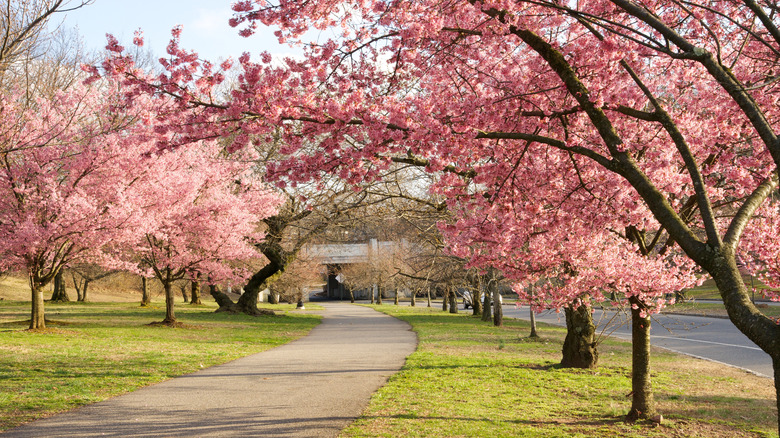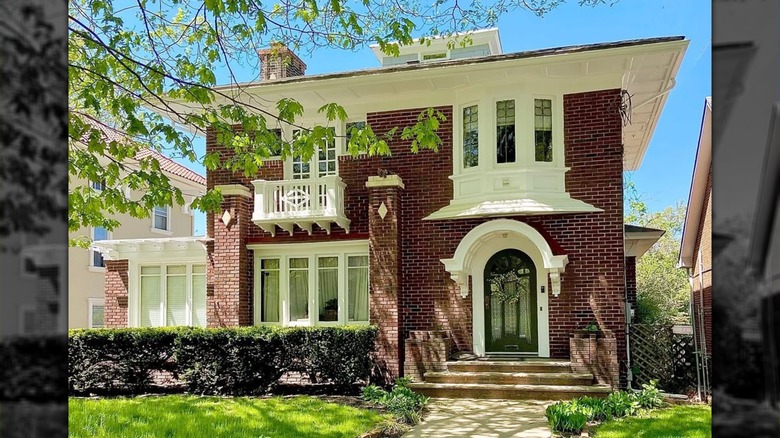One Of Newark's Best Neighborhoods Is An Elegant New Jersey Gem With Cherry Blossoms And Historic Architecture
Forest Hill, Newark's elegant hilltop neighborhood in the North Ward, is a leafy, suburban setting accented by stately residences and elegant boulevards. It lies adjacent to Branch Brook Park — the nation's oldest county park — connecting you to nature and history in one fell swoop. As you cross into Forest Hill, tree‑lined streets and grand homes showcasing a range of architectural styles transport you back to the Gilded Age.
It is also in vibrant Branch Brook Park, between Forest Hill and Rosewood, that you'll find America's largest cherry blossom collection – yes, even larger than that of Washington, D.C. With over 5,000 Japanese cherry trees — 18 distinct varieties— planted as far back as 1927, the park is nothing short of a springtime spectacle. Planted initially by gardener Caroline Bamberger Fuld after a visit to Japan, these trees have since become the focal point of the popular annual Essex County Cherry Blossom Festival held every April. The festive atmosphere includes family activities, cultural performances, food trucks, vendors hawking their wares, and a bike race, so this is one jam-packed event you won't want to miss. No matter the time of year, with the parks' various lakes and streams, you'll be hard-pressed to find a better spot for unwinding.
Forest Hill lies approximately eight miles (or 20 minutes with little traffic) from Newark Liberty International Airport, the nearest major aviation hub. Its proximity to Newark Penn Station and Light Rail service ensures easy links to Newark's downtown, Manhattan, and broader New Jersey. Without a doubt, Forest Hill's refined residential atmosphere and natural treasures make it a highly attractive enclave within Newark's ever-evolving landscape.
Historic architecture in Forest Hills
Forest Hill is vaunted for its eclectic and well‑preserved architecture, reflecting Newark's rapid rise in the late 19th and early 20th centuries. Developed by wealth for wealth between 1880 and 1925, the neighborhood was largely conceived and designed as an upscale suburban haven highlighted by grand mansions and upscale residences. Boasting Beaux‑Arts, Victorian Queen Anne, Colonial Revival, Gothic Revival, Tudor, and Craftsman dwellings, many with Tiffany stained glass windows, Forest Hill is a tapestry of architectural design. A standout is the Queen Anne–style William Clark House, a 28-room brick red mansion built in 1879 by William Halsey Wood. Having later served as a school, its elaborate form and ornate detailing typify the era's grandeur, earning it placement on the National Register of Historic Places.
The Forest Hill Historic District stretches over 50 blocks marked by tree‑lined avenues, generous lawns, and attractive boulevards. The Community Association, along with Newark's Preservation and Landmarks Committee, has placed historic plaques on numerous homes, celebrating individual architectural significance and former owners. Structures such as the salt-box style Sydenham House — built in 1711 and considered the city's oldest private residence — represent Newark's rich colonial past. The Tudor‑style Wright‑Clark Mansion, a handsome brick building that was home to British-born author Coningsby Dawson, is another gem you'll want to check out. It's hard to believe the beautifully restored property, which was converted into seven apartments, was once left abandoned and neglected.
Adding to the area's character are key civic and institutional buildings like the French Gothic Cathedral Basilica of the Sacred Heart and the five-story Renaissance‑style Essex County Courthouse. Want to see even more old homes? If time allows, check out nearby Weequahic, a neighborhood with a historic park and New Jersey charm, or chow down on the global flavors of Ironbound.

